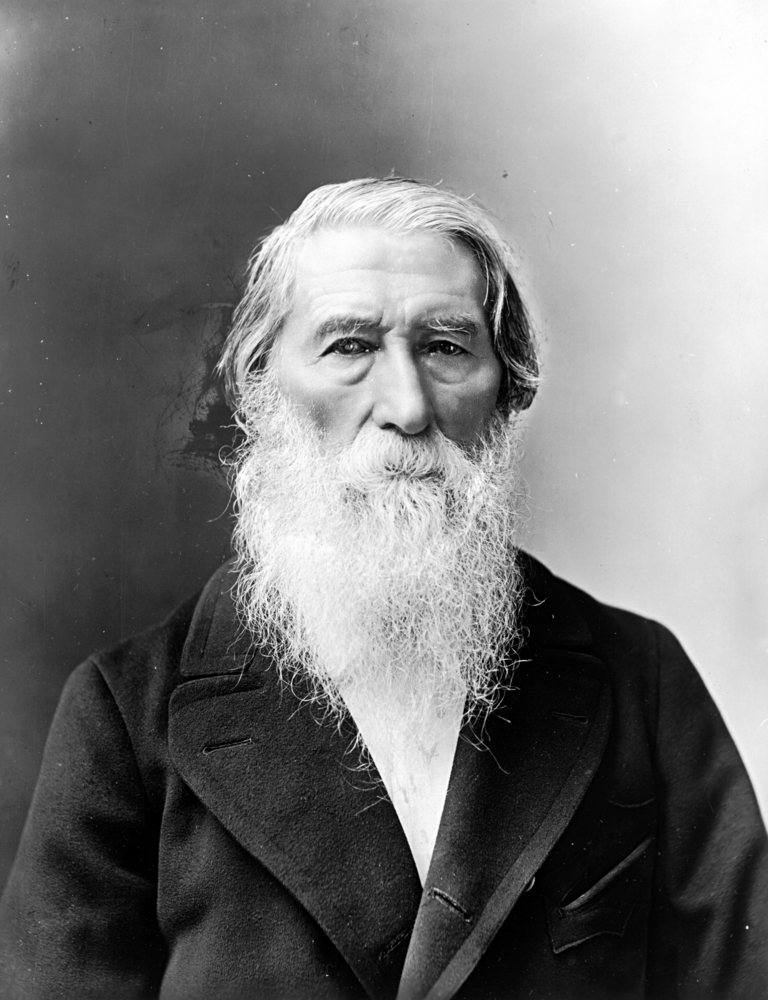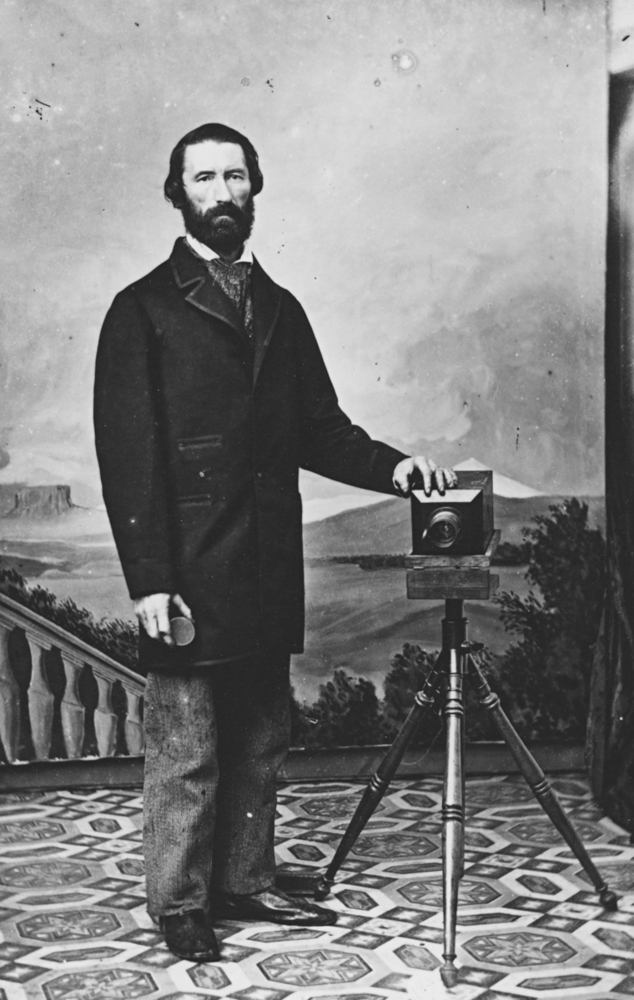Peter Britt is best known as an accomplished photographer and horticulturist in Jackson County. But according to his biographer, he was also "by turns, miner, mule train packer, bee-keeper, financier, property magnate, government meteorologist, first vintner in the Oregon Territory and a father of the region's fruit industry."
Britt was born on March 12, 1819, in the tiny town of Obstalden in the Swiss canton of Glarus. The family was poor, and Peter's training as a portrait artist gave him a marginal living. Following his mother's death in 1845, Peter, his father, and his brother Kaspar immigrated to the United States, settling on a farm near Highland, Illinois, where many Swiss lived. It was a time when portrait painting was being displaced by a new technology, photography; and Britt studied in St. Louis with a prominent daguerreotypist, J. H. Fitzgibbon, before opening a studio in Highland.
Gold fever struck Britt in 1852, and he headed westward with a group of Swiss-born adventurers. That November, traveling on foot and hauling a small cart containing his photographic apparatus, he arrived virtually penniless in the gold camp of Jacksonville, Oregon. By dint of his labor in many fields, he prospered. He built a small home and photographic studio in 1854, and in 1861 Britt was able to send travel money to a former sweetheart, the recently widowed Amalia Grob and her son Jacob. They married and had three children—Emil (born in 1862); Arnold (1863; died in 1864); and Amalia, known as Mollie (1865). Mrs. Britt died in 1871.
To supplement his work as a small-town photographer, Peter Britt established a vineyard in 1858 and planted orchards of pears and peaches. His photographic work was primarily portraits, but he also took street and panoramic views of Jacksonville and documented local gold mining, railroad building, and scenic attractions.
Britt took the first successful photograph of Crater Lake in 1874. On summer wagon trips during the 1870s and 1880s, Mollie and Emil accompanied their father on photography trips to the Rogue and Applegate rivers, in the Siskiyou Mountains, and to Strawberry Valley near Mount Shasta. Later excursions produced images that were used in the campaign to create Crater Lake National Park in 1902.
Beginning with daguerreotypes in the 1850s, Britt worked successively with ambrotypes, tintypes, and wet- and dry-plate glass negatives, and he experimented with prints on leather and porcelain. In the early 1880s, Emil went to San Francisco for training in the photographic arts, and he assisted his father in the studio until Peter Britt's retirement in 1900. The cumulative work of nearly a half-century resulted in a remarkable documentation of a vital Oregon community and its citizens, from farmers and newspaper editors to a French hotelkeeper and Chinese gold miners.
In his later years, Britt spent increasing time with his horticultural pursuits. In the near-Mediterranean climate of the Rogue River Valley, he successfully cultivated palms and banana plants, jasmine and magnolias, oranges, and gingko trees. He also returned to painting, creating scenic views of Switzerland from published images and southern Oregon views taken from his own photographs. He died in Jacksonville on October 3, 1905, and is buried in the Jacksonville Cemetery.
Neither of Peter Britt's children married. After Emil died in 1950 and Mollie in 1954, the property was deeded to the state of Oregon. Britt Hall at Southern Oregon University in Ashland is named after him in acknowledgment of the gift. Britt's extensive collection of photographic prints and negatives is at the Hannon Library of Southern Oregon University. A number of his cameras and studio equipment, and many household items, such as Mollie Britt's square grand piano, are with the Southern Oregon Historical Society of Medford.
Britt's legacy is still evident in Jackson County. His pioneer Valley View Vineyard is the namesake of a contemporary local winery, established in 1972. The annual Peter Britt Music Festival, begun in 1963 on the grounds of the Britt home, attracts musicians from all over the world. And the sequoia redwood tree that Peter Britt planted in 1862 on the birth of his son Emil still dominates the landscape.
-
![]()
Peter Britt.
Oreg. Hist. Soc. Research Lib., bb004567
-
![]()
Peter Britt, self portrait.
Oreg. Hist. Soc. Research Lib., ba018672
Related Historical Records
Map This on the Oregon History WayFinder
The Oregon History Wayfinder is an interactive map that identifies significant places, people, and events in Oregon history.
Further Reading
Miller, Alan Clark. Photographer of a Frontier: the Photographs of Peter Britt. Eureka: Interface California Corporation, c. 1976.
Rose, Chelsea. "Britt Gardens Site (park, house, homestead)." National Register of Historic Places Registration Form, 2019.


